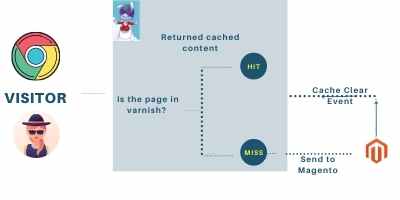Meet Magento India 2023 – Speaker Talk – Improve PWA Performance
On Feb 3, 2023, our CEO Pradip Shah presented a talk titled “Improving Headless / PWA Performance” at Meet Magento India in Mumbai, India.
The premise of the talk was the observation that the Headless / PWA eCommerce world promised lightning fast websites but many have ended up with slow performance, especially as measured by Google’s metrics.
This talk discussed issues and solutions that have been implemented in real eCommerce websites to increase page speed.
There are 2 versions of this for you to download
- The pdf version (5MB)
- The powerpoint version (23MB) – it has a few videos, and hence recommended to download.
Summary
Section 1 : Legacy HTML page technology is not stagnant – with Hyva and on page optimization from technologies like Nitrogen, page speeed scores of Magento traditional HTML page has improved. However, many traditional websites suffer from slower response speeds with uncached pages. Example : www.kalkifashion.com is a Hyva theme with Nigrogen front end caching and optimizaion.
Section 2 : PWA is not magic – the promise of “lightning fast” website needs work. Basic page speed principles apply and so do some new ones.
Section 3 : It is possible to make websites using Magento REST and Graphql. Each one has different challenges. REST by default does not cache and Graphql uses sessions.
Section 4 : When using graphql, avoid POST graphql for queries – use them only for mutations.
Section 5 : Study your application and you can add caching to Graphql’s that Magento may mark as not caceheable.
Section 6 : Custom graphql queries result in database queries that may need optimization. A step by step method to get the underlying mysql query generated is a useful process. We used that to achieve great results. www.mysoresareeudyog.com has a custom default filter for a listing page – latest.
Section 7 : Magento 2.4.5 allows method to prevent session locking using authentication. But by default, authenticated graphql calls are not cached – an approch similar to one presented earlier will be required to ensure optimal caching is achieved.
Section 8 : Go beyond. Add logic in frontend and cache GraphQL results in the browser. This is the ultimate power of headless / PWA. It may not help with page scores that are measured without browser cache, but user experience will improve.
Section 9 : Bulid can improve page loads. Appropriate sized chunks and using hashes instead of version. Another improvement build can give is use of cookie free domains. A static domain for example for js and css bundles allows the main domain to not go through a caching layer, improving page load speed.


























